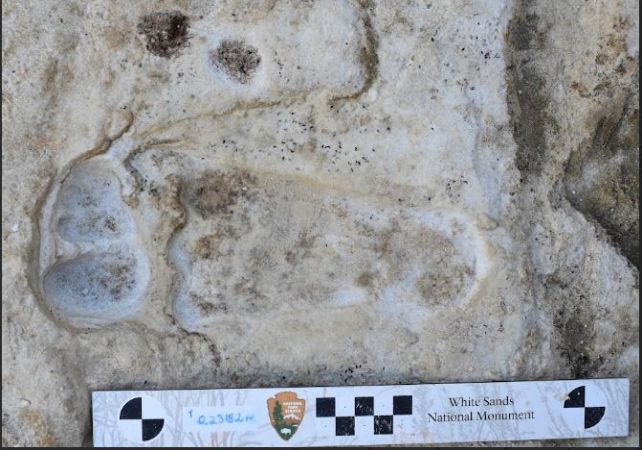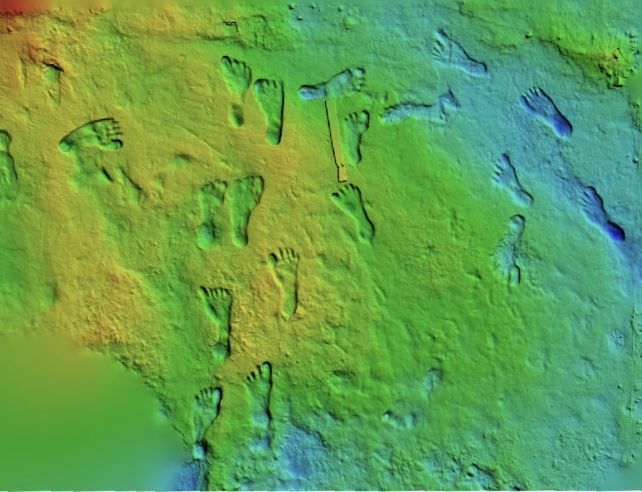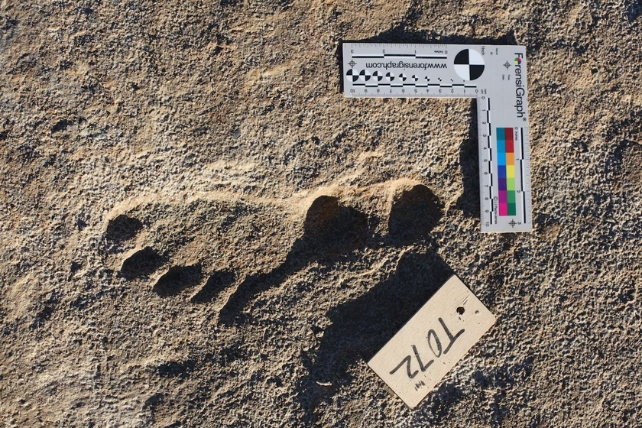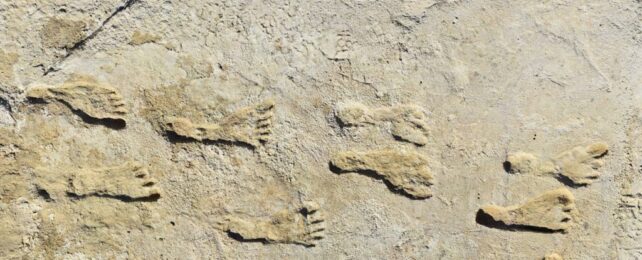Footprints scattered across what is now the desert of New Mexico were trod by human feet no later than 21,500 years ago, new research has confirmed.
The venerable age of these ancient traces in White Sands, New Mexico was revealed in 2021, to much awe and more than a little skepticism. Now, a team including some of the same scientists has performed more rigorous dating, confirming the controversial result.
It now seems more likely than ever that humans were, indeed, present in what is now North America during the Last Glacial Maximum.
"The immediate reaction in some circles of the archeological community was that the accuracy of our dating was insufficient to make the extraordinary claim that humans were present in North America during the Last Glacial Maximum," explains geologist Jeff Pigati of the US Geological Survey (USGS), who co-led the new effort.
"But our targeted methodology in this current research really paid off."
The original dating, which found the footprints dated to between 21,000 and 23,000 years ago, was based on radiocarbon dating of seeds of an aquatic plant called Ruppia cirrhosa – spiral ditchgrass – that were found embedded in the fossilized prints.

Radiocarbon is a radioactive form of carbon, or C-14, that forms high up in Earth's atmosphere as cosmic rays collide with nitrogen. Earth is being constantly, gently rained on by C-14, which is taken up into plants and animals while they live.
Since C-14 decays into stable carbon at a known rate, scientists can look at the ratios of C-14 to stable carbon in a sample and determine the age of that sample.
The team's 2021 findings were questioned because of the aquatic nature of the plant on which they based their findings.
Water can be a carbon reservoir, which means the plants could take up dissolved carbon from the water that's older than the carbon falling from the sky during their lives, giving the impression that the dated plant material is much older than it really is.

Even when that result was published, the researchers were already following up on other avenues of dating, to be certain of their findings.
"We were confident in our original ages, as well as the strong geologic, hydrologic, and stratigraphic evidence, but we knew that independent chronologic control was critical," says geologist Kathleen Springer of the USGS, who co-led the research.
The team collected conifer pollen from the same geological layer as the ditchgrass seeds, meaning that it was likely deposited at the same time. However, conifers are terrestrial, which means any carbon fixed therein would have been atmospheric carbon, and is not subject to the same error margin as aquatic carbon.
For each of three samples, the team isolated around 75,000 pollen grains, and performed radiocarbon dating.

They also performed a different kind of dating on quartz found in the footprint layers. Optically stimulated luminescence is a dating technique that allows scientists to determine how long ago a mineral sample was last exposed to sunlight.
Both results were entirely consistent with the earlier findings. The conifer pollen ranged from 22,600 to 23,400 years ago, and the quartz last saw sunlight around 21,500 years ago.
Add those results to the ditchgrass and we have three separate lines of evidence pointing to the same conclusion – a conclusion that can help us better understand the history of human migration and habitation on this ever-changing planet.
"Our new ages, combined with the strong geologic, hydrologic, and stratigraphic evidence," Springer says, "unequivocally support the conclusion that humans were present in North America during the last Glacial Maximum."
The research has been published in Science.
